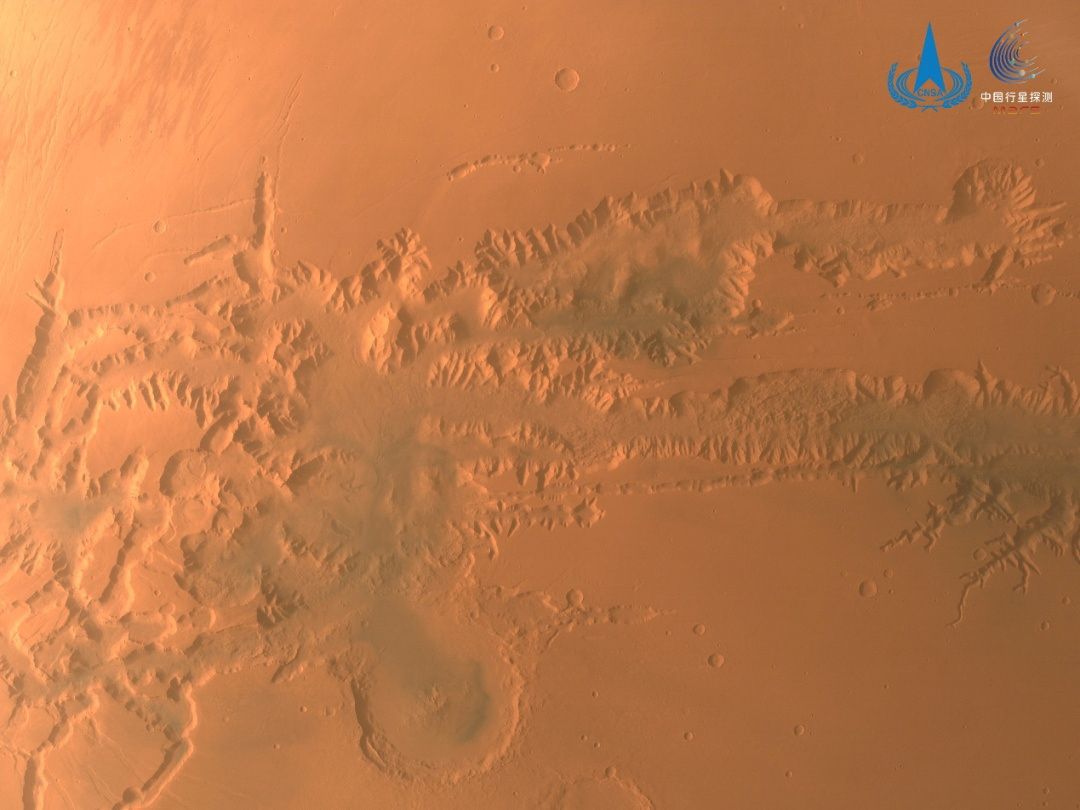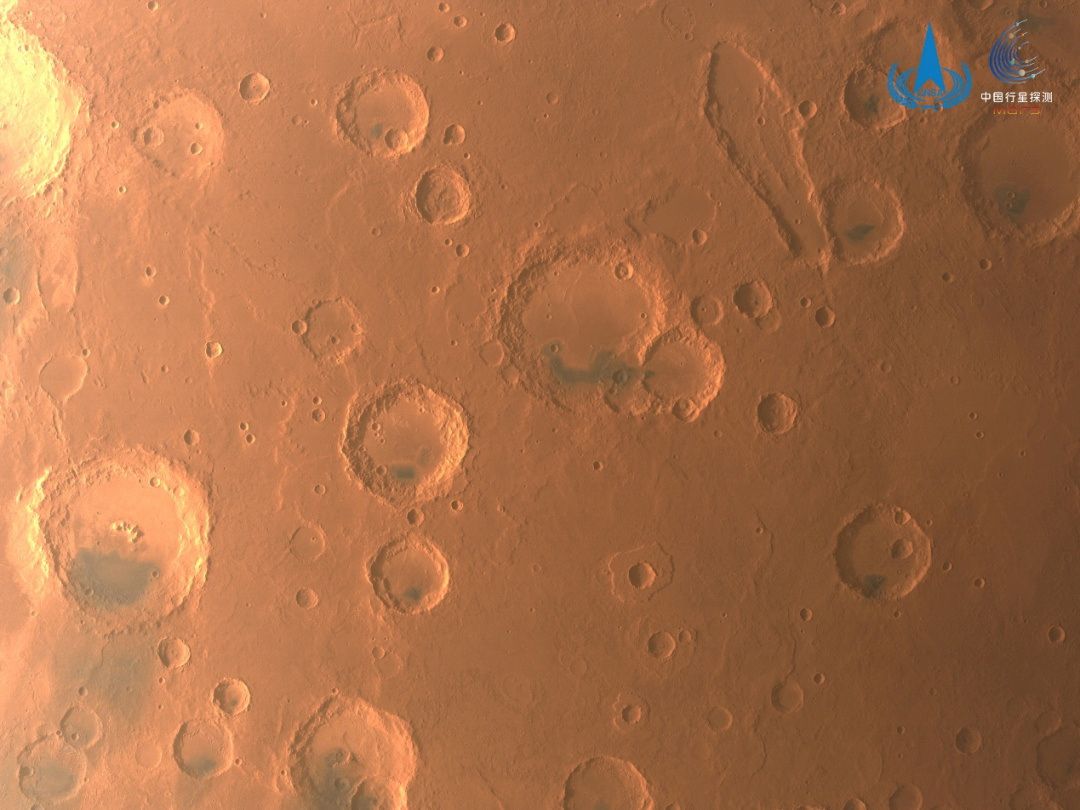With a $24 billion budget and dozens of active, high-profile missions, it’s not surprising that NASA is the most visible of the dozens of government space agencies in the world. But China’s space program is a rapidly developing superpower that, whether it’s due to political tensions or the government’s careful control of information, doesn’t often get its fair share of attention.
Just this week, the China National Space Administration (CNSA) released a series of high-resolution images of Mars taken by its Tianwen-1 spacecraft, which arrived at the Red Planet in February 2021 and has been orbiting it ever since. Over the course of more than 1,300 orbits, Tianwen-1 has photographed the entire planet in extreme detail, from the icy south pole to the 2,485-mile-long Valles Marineris canyon to the 59,055-foot-tall shield volcano Ascraeus Mons.
While the U.S. has the reliable Mars Reconnaissance Orbiter and other spacecraft have imaged the planet over the years, the full-surface survey by China’s program will be valuable to scientists and colony planners across the world if the country releases the imagery widely. But this is just the latest success of a thriving space program that has ambitious goals over the next five years — and it might not even be its most impressive one.
The fact that Tianwen-1 even made it to Mars is remarkable, as it was China’s first solo interplanetary mission. (China participated in a failed joint mission with Russia, Phobos-Grunt/Yinghuo-1, which launched in 2011 but did not leave Earth orbit.) Overall, Mars missions, from flybys to orbiters to landers, have about a 50% success rate, according to NASA.

The Valles Marineris canyon on Mars, as photographed by China’s Tianwen-1.
Tianwen-1 also carried with it the Zhurong rover, which touched down on the Martian surface on May 15, 2021, making China the third country to land on Mars, after the former Soviet Union and the United States. (Worth a mention: while the Soviet rover landed on the surface, it never operated.) Zhurong, on the other hand, has been exploring the Utopia Planitia basin for more than a year, though it entered a winter hibernation last month.
Closer to home, China has also succeeded on the moon, becoming the first nation to attempt to soft-land a probe on the dark side of the moon, which never faces the Earth. And it succeeded. The Chang’e 4 lander arrived on the lunar surface on January 3, 2019, carrying with it the Yutu-2 rover, which is actively exploring the Von Kármán crater.

Craters in Mars’ Arabia Terra region, as photographed by China’s Tianwen-1.
And even closer to home than the moon, China is now developing its own space station in low Earth orbit — China is notably banned from the International Space Station due to a 2011 Department of Defense act that prohibits NASA from collaborating with the nation unless specially authorized. The first module of China’s Tiangong space station, Tianhe, was launched in May 2021, and the CNSA suggests the final two modules, Mengtian and Wentian, will be launched by the end of this year. Since then, two crews of taikonauts (China’s version of astronauts) have completed long-duration missions on the station, while a third is currently onboard for a six-month stay.
Likely contributing to the lack of attention on China’s space program is the government’s own lack of transparency. Many missions have not been announced until the last moment, and the particularly risky ones are not usually televised — that way, failures can be kept fairly quiet. Other agencies and private spaceflight companies are far more forthcoming in their current and future projects, sharing both successes and failures alike. (NASA, for instance, almost always provides a live stream of crucial mission moments, such as launches and landings.)

The south pole of Mars, as photographed by China’s Tianwen-1.
But with so much success under its belt, the CNSA is becoming more forthcoming about its plans. In January 2022, the administration published a white paper titled “China’s Space Program: A 2021 Perspective,” sharing both achievements since 2016 and plans for the next five years. Intriguingly, the CNSA also acknowledged some of its failures in the white paper; it noted that only 183 out of more than 400 launch attempts between 2016 and 2021 were successful.
Looking ahead to the next half decade, China plans to launch the Xuntian space telescope, which will dock with the Tiangong space station; the ZengHe asteroid sample return mission; and several lunar probes. China has also promoted the planning of a crewed lunar mission, which could make it the second country to land humans on the moon.
Of course, project timelines in the space industry are frequently delayed, but it seems the Chinese space program has a busy few years ahead of it.















 English (US) ·
English (US) ·